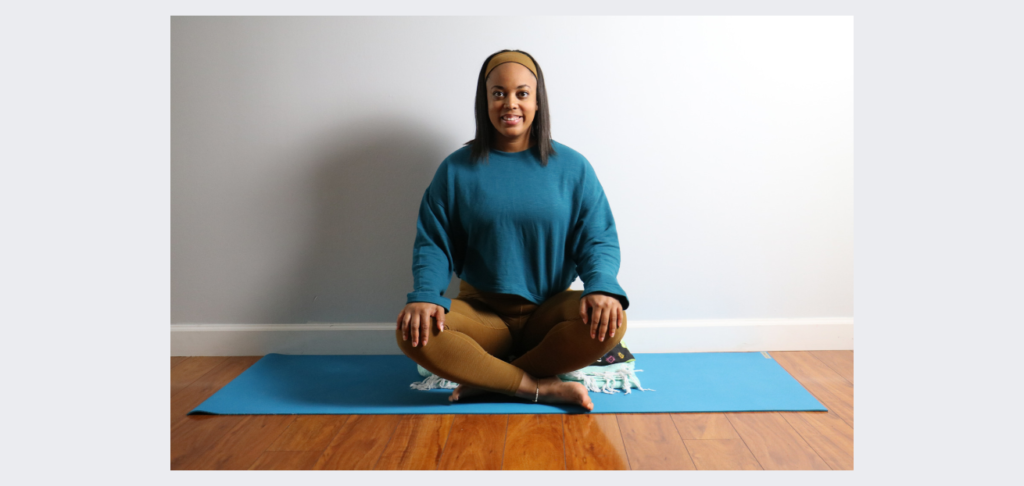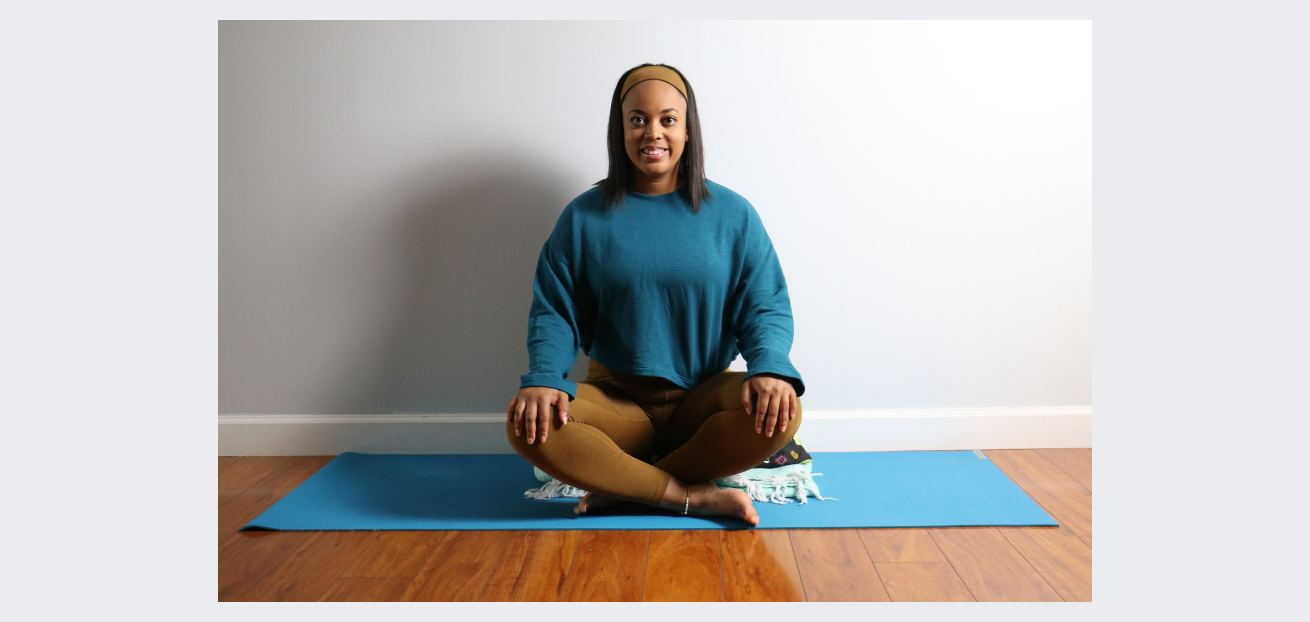The Yoga Bolster: A Complete Guide
As a yoga teacher, I incorporate the yoga bolster into my personal practice as well as my restorative yoga classes. I also use a bolster as a cushion while meditating. Learn more about yoga bolsters – and different ways to incorporate them into your practice – in this post.

What are yoga bolsters?
A yoga bolster is a rectangular or cylindrical pillow/cushion used in yoga practice to provide support and comfort. Bolsters can be made from a variety of fabrics and can be filled with materials such as buckwheat hulls, cotton batting, polyester, and foam, and weigh about five pounds. I tend to like foam the least, and I prefer cotton or buckwheat as my top filling choice.
While they are typically firm and have rounded edges, they’re usually softer than blocks and also much larger, so they can support more of your body. Some yogis – myself included – use bolsters as meditation cushions.
What should you look for when buying a yoga bolster?
A bolster should be firm, but it shouldn’t be hard. You want it to be firm enough to support your body, but not so firm that it causes discomfort. I prefer bolsters that are about the firmness of the cushions on the back of your sofa.
Does the shape matter?
I’ve found that more rectangular bolsters work better for practice. The more round a bolster may be – especially if it’s a larger bolster – the harder it may be for certain postures. For example, if you’re lying on a bolster or sitting up against it, it may feel uncomfortable on your spine.
However, a round bolster, as long as it’s not large, may feel better when placing it underneath your knees when you’re in a supine position or your ankles when in a prone position.
Material options
Outer shells are typically made of cotton or similar materials, but some are made of fabrics such as nylon that can be wiped down in between practice sessions. These are particularly helpful at studios and gyms where they may not wash the covers frequently – if at all. For my at-home practice, I prefer cotton covers. They’re not “squeaky” when you’re using them, and they’re a softer surface than the nylon covers.
The firmer the material, the lower the possibility of it shifting during your practice. The nylon covers can also be slippery at times, making it more difficult to stay in place while leaning against them or placing a blanket on top.
Does size matter?
The best size bolster depends on how you intend to use it during practice. My favorite bolster’s dimensions are 11″ x 25″ x 6″; however, I have a homemade bolster* that is the same length but half the width and height.
In general, most yoga bolsters you’ll find in studios and gyms are about 24 inches long and 12 inches wide, but they can come in a variety of sizes. For example, there are pranayama bolsters, which are much narrower and can be used differently.
*Fun fact: My mom made the two of us yoga bolsters (mine has a cute llama design), and mine turned out to be much narrower than my standard bolster, but it’s perfect for pranayama, to use under my knees in savasana and under my shoulders during heart openers, and to use in place of a rolled blanket.

How do you use a yoga bolster?
I consider yoga bolsters to be one of the most essential props for at-home yoga practice. Yoga bolsters can be used for many reasons; nonetheless, they are typically used to support your body, bringing your body/body parts closer to the floor, while also releasing pressure and tension in the areas supported by the bolster – muscles, joints, etc. This support helps relieve tension by allowing you to relax more deeply into the posture.
One of my favorite ways to use the bolster is to sit on it cross-legged during meditation or pranayama practice. As I noted earlier, I like to place a bolster under my knees during savasana. Since having surgery, I have had a lot less low back pain, but it still feels nice to modify the pose in this way.

What yoga styles/classes use bolsters?
I regularly use bolsters for yin yoga practices (Yin Yoga and Restorative Yoga predominantly), meditation, and pranayama practices. I don’t typically use them during my Hatha/Vinyasa-style classes, but find that they can be helpful for people practicing inversions who are nervous about the possibility of falling over.
What poses use a yoga bolster?
In my weekly restorative yoga classes, I use them for a majority of postures and offer them as an option for modified versions of poses. I like lying on bolsters in Crocodile Pose, propping the bolster against blocks and leaning back during supported reclined bound angle pose, under the knees in Savasana and Mountain Brook Pose, supported backbends, under the sacrum in Supported Bridge Pose, under your body in Child’s Pose, and more.
While I don’t typically use a bolster during my Hatha/Vinyasa-style classes, it doesn’t mean you can’t! A bolster can be great for certain hip openers as they bring the floor closer to your body. For example, if you have a difficult time with fire log or pigeon poses, a bolster can help fill the gap between your body and the ground, allowing you to relax more, and maybe even deepen the posture in the process.
Check out the video below for a full restorative yoga practice that incorporates a yoga bolster.
Who should use yoga bolsters?
Anyone and everyone! I’m a big advocate for utilizing props in your yoga practice. There are so many benefits to using props in general. Still, bolsters are especially great for people who are looking to find more ease in poses and for yogis who are feeling nervous about certain inversions (i.e. crow pose). How? You can place the bolster in front of, behind, or to the side of you to have a soft surface for landing. You probably won’t end up needing it, but sometimes it helps just to know that the support is there for you!
Who makes the best yoga bolsters?
My favorite style bolster is the Standard Solid Yoga Bolster from Hugger Mugger. This is my favorite brand to use when teaching, and I also have one at home. I think they’re the perfect size, shape, and firmness for restorative yoga practice.
At extendYoga, where I teach a restorative yoga class once or twice a month, they have bolsters that you can spray and wipe down, which is great for a studio or other public setting. As I mentioned earlier, bolsters with fabric coverings aren’t easy to clean after every class, let alone in general, so this is a great option for studios and clubs.
Conclusion
Yoga bolsters are a versatile prop that can be used to support the body in a variety of ways. They are especially beneficial for restorative yoga, pregnancy yoga, and yoga for beginners or people with injuries. If you are new to yoga or if you are looking for ways to deepen your practice, consider adding a yoga bolster to your yoga prop collection.
